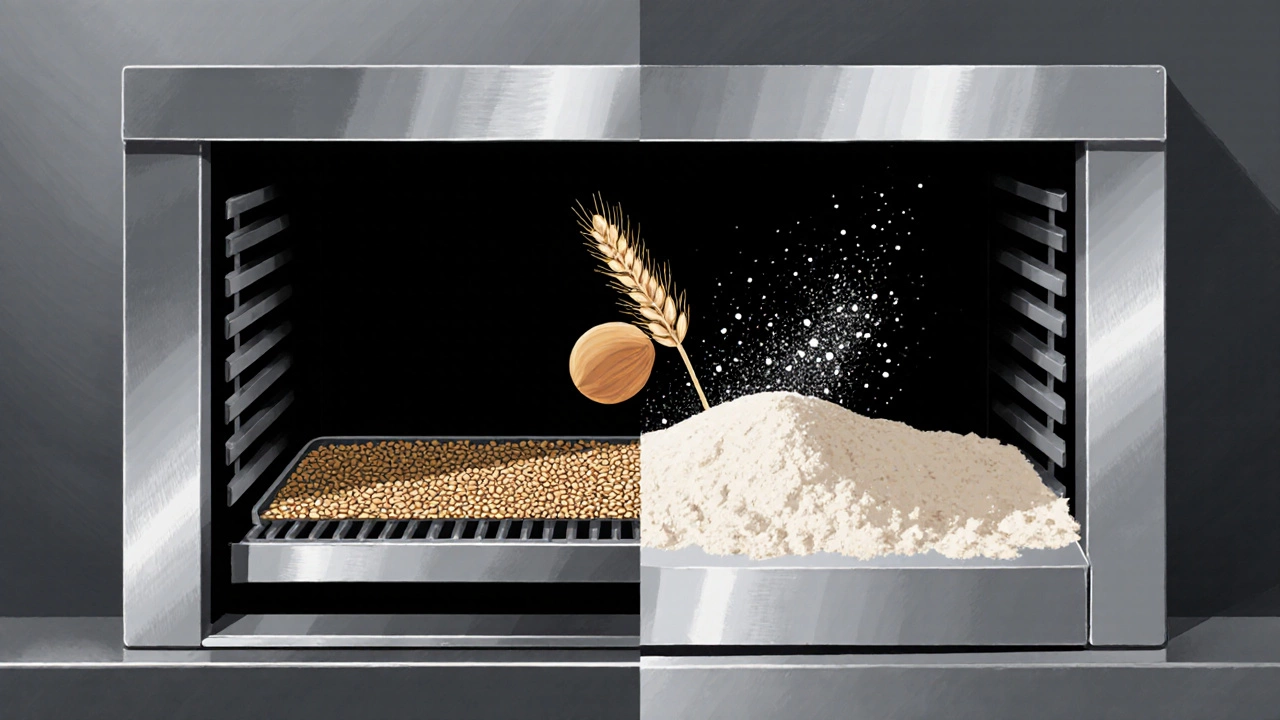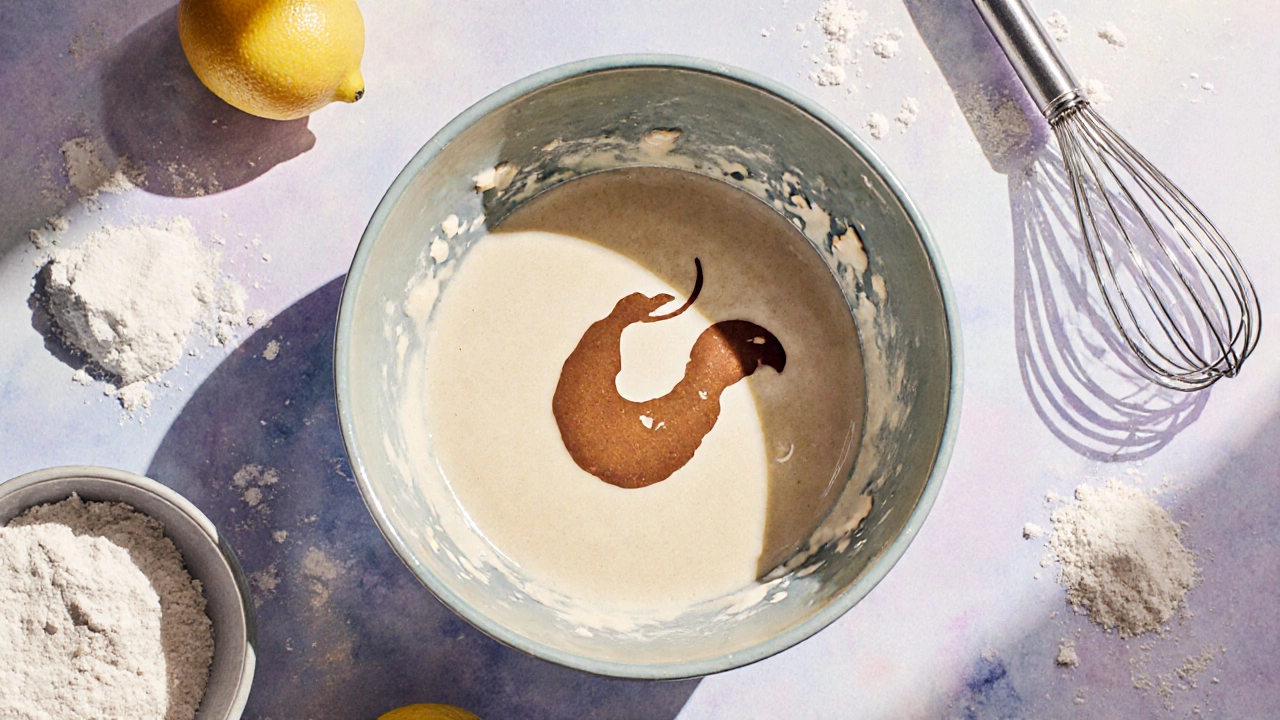Tahini Gluten Check Tool
Check Your Tahini Safety
When you glance at a jar of Tahini is a smooth paste made from ground sesame seeds, the question that often pops up is whether it hides any gluten. If you’re baking a Gluten-Free Cake or just trying to keep your pantry safe for a celiac diet, you need a clear answer - and a few practical tips.
What Exactly Is Tahini?
Sesame seeds are tiny oil‑rich nuts that have been turned into a paste for thousands of years. The traditional process is simple: clean the seeds, toast them lightly (or leave them raw), then grind them until they release their natural oils. The result is a thick, nutty spread that’s a staple in Middle Eastern cuisine, from hummus to sauces.
How Is Tahini Made? Could Gluten Slip In?
The core ingredients are just two things - sesame seeds and a pinch of salt. However, commercial production can introduce extra steps that matter for gluten‑sensitive eaters:
- Roasting: Some factories use shared ovens that also process wheat‑based products. If the equipment isn’t cleaned rigorously, trace amounts of gluten can linger.
- Flavoring: Flavored tahini (e.g., honey, garlic, or chili) often includes additives, spices, or thickeners that may contain wheat starch or maltodextrin.
- Packaging: Bulk bags might be packed on lines that also handle grain flours.
Because the base recipe is naturally gluten‑free, any gluten presence is always a result of external contamination or added ingredients.
Gluten Basics: What It Is and Why It Matters
Gluten is a group of proteins found primarily in Wheat, Barley and Rye. For most people it’s harmless, but for those with celiac disease or non‑celiac gluten sensitivity, even a tiny dose can trigger inflammation, digestive upset, or long‑term damage.
Health authorities define a product as “gluten‑free” when it contains less than 20 ppm (parts per million) of gluten. That threshold is low enough to keep most sensitive individuals safe, but it still requires careful manufacturing and labeling.
Is Pure Tahini Gluten‑Free?
The short answer: tahini gluten free when it’s made from 100 % sesame seeds, salt and water. Pure, raw or lightly toasted tahini carries zero gluten because sesame seeds contain none.
Most reputable brands test their final product and label it as gluten‑free. Look for certifications such as the Gluten‑Free Certification logo from organizations like the Gluten Intolerance Group or the Australian Celiac Association.

When Can Tahini Contain Gluten?
Even though the base is clean, several scenarios can introduce gluten:
- Flavored varieties: Honey‑sweetened or garlic‑infused tahini sometimes uses wheat‑derived thickeners.
- Shared processing lines: Small‑batch manufacturers may use the same grinders for seed‑based pastes and grain flours.
- Cross‑contamination during shipping: Bulk containers stored alongside grain products can pick up dust.
If you spot any of the following ingredients, assume gluten is present unless the label explicitly says otherwise: wheat starch, malt extract, barley malt, rye flour, or any “natural flavor” without a clear source.
Reading Labels: How to Verify Gluten‑Free Status
Here’s a quick cheat sheet for the pantry:
- Check the ingredient list: Pure tahini should read “sesame seeds, salt” (and possibly water or oil). Anything beyond that warrants a closer look.
- Search for gluten‑free symbols: Look for the certified gluten‑free logo, the “GF” badge, or a statement such as “gluten‑free - certified” on the front.
- Read the fine print: Some manufacturers add a disclaimer: “May contain traces of wheat due to shared equipment.” That’s a red flag for strict celiacs.
- Contact the maker: When in doubt, a quick email to the brand’s customer service often yields a definitive answer.
Using Tahini in Gluten‑Free Baking
Once you’ve confirmed your tahini is truly gluten‑free, it becomes a versatile tool for baking. Its rich, nutty flavor adds depth to cakes, brownies, and cookies without the need for dairy or added sugar.
Here are three easy ways to incorporate it into a Gluten‑Free Cake recipe:
- Moisture booster: Replace part of the oil or butter with an equal amount of tahini to keep the crumb tender.
- Flavor enhancer: Swirl a tablespoon of tahini into a vanilla batter for a subtle sesame note.
- Gluten‑free frosting: Blend tahini with powdered sugar, lemon juice, and a pinch of salt for a quick, silky glaze.
Because tahini is naturally low in sugar, you’ll often add a bit more sweetener when using it in desserts, but the result is a richer, more complex taste profile.

Quick Checklist for Safe Tahini
- Ingredient list: only sesame seeds, salt (and possibly water/oil).
- Look for a certified gluten‑free logo.
- Avoid flavored varieties unless they explicitly state “gluten‑free.”
- Buy from brands that test for Gluten and publish results.
- Store in a clean, airtight jar away from grain products.
Comparison: Plain vs. Flavored Tahini
| Type | Gluten Content | Typical Additives |
|---|---|---|
| Plain (raw or toasted) | None (0 ppm) | Sesame seeds, salt, occasional oil |
| Honey‑sweetened | Potential (depends on honey source; may contain wheat starch) | Sesame seeds, honey, wheat starch (optional) |
| Garlic‑infused | Potential (many brands use wheat‑derived flavor base) | Sesame seeds, garlic, maltodextrin, salt |
Mini FAQ
Can I use any store‑bought tahini in a gluten‑free recipe?
Only if the label says it’s 100 % sesame seeds and carries a gluten‑free certification. Plain, unflavored jars from reputable brands are safest.
Is tahini safe for people with celiac disease?
Yes, pure tahini contains no gluten, but cross‑contamination can be an issue. Choose certified gluten‑free products or verify with the manufacturer.
Do flavored tahinis ever get certified gluten‑free?
A few manufacturers have obtained certification for flavored versions, but it’s rare. Always read the label for the certification mark.
How can I test my own tahini for gluten at home?
Home test kits are available that detect gluten down to 10 ppm. Follow the kit’s instructions, but remember the most reliable method is to buy a certified product.
Will using tahini affect the texture of a gluten‑free cake?
Tahini adds moisture and a creamy mouthfeel, often making gluten‑free cakes softer and richer. Just balance the extra fat with a bit more leavening if needed.